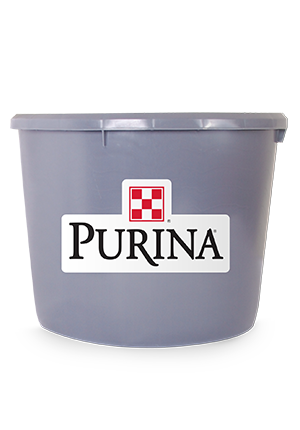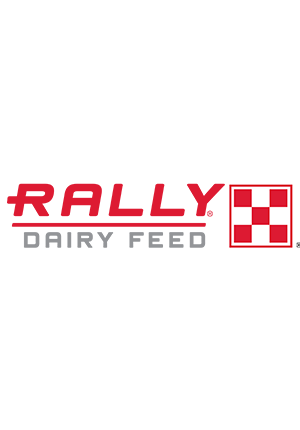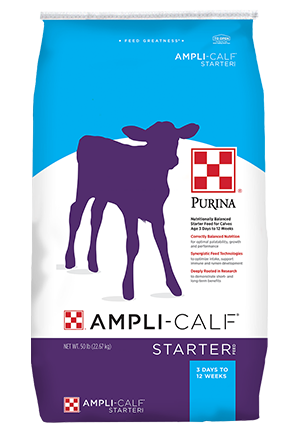
Five Tips to Increase Milk Fat Production
Cow : Lactating Cow Nutrition

Enhancing your milk check by boosting milk fat production takes a total mixed ration that supports the proper rumen balance.
Adding value to your milk check is a balancing act between overall milk production and components. In many situations, increasing the amount of milk fat can boost your bottom line.
Whether your herd is struggling with milk fat depression or you are looking to capture additional value from milk, follow these five tips when considering how to increase milk fat in dairy cows:
Unfortunately, if forages are of poor quality or not stored properly, not much can be done to cost-effectively minimize the negative impacts. For example, mold negatively impacts rumen fermentation. If you must deal with moldy forages, it will likely be a challenge to maximize rumen performance and enhance milk fat production.
Perform regular maintenance on kicker plates, knives and weigh bars to confirm they are in proper working order. Something as simple as driving over a pothole can affect weigh bar performance, resulting in inconsistent mixing.
Proper feed delivery and availability also impacts milk fat levels. Regularly push up the feed to help reduce slug feeding in dairy cows. Slug feeding can alter rumen pH, leading to subclinical rumen acidosis that negatively impacts forage fermentation and milk component production.
Another tool is the management of neutral detergent fiber digestibility (NDFD) to make certain it’s at the optimal level to support milk fat production. Dietary target levels are dependent on several ingredient and physical characteristics. Work with your nutritionist to determine target levels for your herd’s diets.
Evaluating particle length can be done both on a subjective, daily basis by monitoring feed bunks, as well as in a more objective manner by using the Penn State Particle Separator (PSPS), also known as the Penn State Shaker Box. To check ration effective fiber levels, use the PSPS to evaluate particle length and distribution of particle sizes. Typically, you should see 7% in the top sieve for lactating diets. Target levels in other sieves are dependent on whether you’re using the original 3-sieve PSPS or the more recent 4-sieve PSPS. Again, work with your nutritionist to determine frequency of PSPS evaluation and levels for your herd’s diets.
Cud chewing can also be a good indicator of optimal fiber and forage digestibility levels. Half or more of the cows at rest in a pen should be chewing their cud at any given time. Monitor cud chewing when the group has been undisturbed to ensure you’re getting the best assessment.
Monitor the pounds and percentage of starch fed in a TMR. Technology like rumen degradable starch testing with Calibrate® can help assess starch levels in dairy feed rations and indicate how the starches will perform.
The type and quantity of dietary fat are also important to support optimal levels of milk fat production, especially for promoting sustained lactation without depleting body reserves. A common dietary fat level is 5%. Higher levels can be successfully fed, depending on the other dietary nutrient levels that can impact milk fat yield.
The different sources of fat fed impact milk fat production. Purina® Propel Energy Plus Balance includes a mix of C16:0 and C18:0 fatty acids to provide a cost-effective, balanced approach to achieve milk fat goals as well as support other body needs for energy in the form of fat.
Using Purina® MetaPro® Nutrition to include by-pass soybean meal-based ingredients like SurePro® or products like Purina® USA Lysine® can aid with this balancing act. In addition, rumen-protected methionine sources may have a place in diets to support milk component yield.
However, balancing rations for amino acids without confirming that the other pieces of the nutrition puzzle mentioned above are in order will likely not result in the return on investment expected.
First, ensure the rations include the highest quality forages possible. Then determine the rations are consistently delivered to cows as formulated. Once these factors are in place, then balance the ration for amino acids.
Learn how to get more from your dairy feed rations for every stage of your cows’ lactation.
Adding value to your milk check is a balancing act between overall milk production and components. In many situations, increasing the amount of milk fat can boost your bottom line.
Whether your herd is struggling with milk fat depression or you are looking to capture additional value from milk, follow these five tips when considering how to increase milk fat in dairy cows:
1. Focus on forage quality
Emphasize to your team the importance of harvesting and preserving high-quality forages. Make sure forages are harvested on time and at the correct moisture. Protect those efforts with proper packing and storage practices. For example, use two layers of plastic and add an inoculant. Your goal is to ensure the ensiled forages ferment properly and are free of molds and wild yeasts.Unfortunately, if forages are of poor quality or not stored properly, not much can be done to cost-effectively minimize the negative impacts. For example, mold negatively impacts rumen fermentation. If you must deal with moldy forages, it will likely be a challenge to maximize rumen performance and enhance milk fat production.
2. Properly mix and deliver dairy feed rations
Over- or under-mixing dairy feed rations can alter what the cow eats and how the ration ferments in the rumen. Both scenarios can cause issues with rumen pH and cow health, leading to reduced component production. Verify that your herd’s total mixed ration (TMR) is mixed properly to provide consistent dairy rations at every feeding and support milk fat production.Perform regular maintenance on kicker plates, knives and weigh bars to confirm they are in proper working order. Something as simple as driving over a pothole can affect weigh bar performance, resulting in inconsistent mixing.
Proper feed delivery and availability also impacts milk fat levels. Regularly push up the feed to help reduce slug feeding in dairy cows. Slug feeding can alter rumen pH, leading to subclinical rumen acidosis that negatively impacts forage fermentation and milk component production.
3. Evaluate fiber and forage digestibility levels
Examine the fiber and forage digestibility levels in the diet. Nearly half of milk fat precursors are made of short-chain fatty acids produced during rumen fermentation of dietary fiber. High forage quality with digestible fiber helps increase milk fat yield.Another tool is the management of neutral detergent fiber digestibility (NDFD) to make certain it’s at the optimal level to support milk fat production. Dietary target levels are dependent on several ingredient and physical characteristics. Work with your nutritionist to determine target levels for your herd’s diets.
Evaluating particle length can be done both on a subjective, daily basis by monitoring feed bunks, as well as in a more objective manner by using the Penn State Particle Separator (PSPS), also known as the Penn State Shaker Box. To check ration effective fiber levels, use the PSPS to evaluate particle length and distribution of particle sizes. Typically, you should see 7% in the top sieve for lactating diets. Target levels in other sieves are dependent on whether you’re using the original 3-sieve PSPS or the more recent 4-sieve PSPS. Again, work with your nutritionist to determine frequency of PSPS evaluation and levels for your herd’s diets.
Cud chewing can also be a good indicator of optimal fiber and forage digestibility levels. Half or more of the cows at rest in a pen should be chewing their cud at any given time. Monitor cud chewing when the group has been undisturbed to ensure you’re getting the best assessment.
4. Monitor starch and fat levels
Awareness of starch digestion rates in the rumen is critical when pursuing higher milk fat production. Different ingredients have faster rumen fermentation times than others, affecting rumen dynamics. Differences in ingredients may significantly impact milk fat production levels. Rumen degradable starch testing allows you to quickly rule out starch as a culprit of suppressed milk fat levels.Monitor the pounds and percentage of starch fed in a TMR. Technology like rumen degradable starch testing with Calibrate® can help assess starch levels in dairy feed rations and indicate how the starches will perform.
The type and quantity of dietary fat are also important to support optimal levels of milk fat production, especially for promoting sustained lactation without depleting body reserves. A common dietary fat level is 5%. Higher levels can be successfully fed, depending on the other dietary nutrient levels that can impact milk fat yield.
The different sources of fat fed impact milk fat production. Purina® Propel Energy Plus Balance includes a mix of C16:0 and C18:0 fatty acids to provide a cost-effective, balanced approach to achieve milk fat goals as well as support other body needs for energy in the form of fat.
5. Balance for methionine and lysine
Amino acids are an important tool to help maximize milk and component production. The right balance of amino acids can help support greater milk component yields and avoid milk fat depression.Using Purina® MetaPro® Nutrition to include by-pass soybean meal-based ingredients like SurePro® or products like Purina® USA Lysine® can aid with this balancing act. In addition, rumen-protected methionine sources may have a place in diets to support milk component yield.
However, balancing rations for amino acids without confirming that the other pieces of the nutrition puzzle mentioned above are in order will likely not result in the return on investment expected.
First, ensure the rations include the highest quality forages possible. Then determine the rations are consistently delivered to cows as formulated. Once these factors are in place, then balance the ration for amino acids.
Learn how to get more from your dairy feed rations for every stage of your cows’ lactation.



